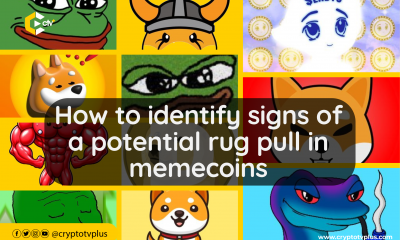Education
Explore & conquer to earn on Medieval Empires

An advanced multiplayer online strategy game called Medieval Empires is set in the late 13th century in modern-day Turkey – Ottoman Empire. Erturul Gazi, a tribal warrior and renowned Kayi tribe leader, is the initial center of the game’s plot.
In the game, Edward 1st, often known as Edward Longshanks or Hammer of the Scots, squares off against Erturul Gazi, the leader of the Kayi Turkic Tribe, who is spreading a victorious 9th Crusade across Europe to the Holy Land.
Players begin the game by building cities while engaging in trade, combat, and alliance-building in a passive PvE environment. The globe map will grow as a result of ongoing combat, creating a dynamic gaming world. Players can progress in the game by completing daily objectives, general duties, and tale missions.
As new rulers and areas are made available for players to explore and conquer, the game will change. In the near future, new factions to the game, including but not limited to the Mongols, Byzantines, and Mamluks will be included in addition to the Turkic Tribes and English Crusaders.
Several fantastic characteristics, such as player reach, developer ecosystem, affordable gas fees, security, and speed, are offered by the Polygon blockchain, which is the platform on which Medieval Empires is being developed. Furthermore, in comparison to other blockchains, it is also environmentally benign. It will be possible to play the game on a computer running Windows, a Mac running OS X, and a mobile device running iOS or Android.
Medieval Empires Game Play
In their medieval adventures, players will complete a variety of short-term, mid-term, and long-term tasks to rule and dominate the game’s universe. The breakdown goes thus:
Short Term (same day)
- Battle invaders
- Daily mission tasks
- Claim resources
- Produce Items/(N)FTs
- Trade
- Upgrade Low-Level Buildings
Mid-Term (within a month)
- Upgrade High-Level Buildings
- Unlock new game elements
- Participate successfully in Events (Solo & Clan)
Long-Term (up to a year)
- Run a successful Clan (which can be multiple sub-points like high income, a large number of loyal followers, a big impact on related Events, etc.)
- Ability to lead leaderboards (including i.e. RvR-Event-Leaderboard)
- In-game prestige
The cruel 13th century, when Medieval Empires is set, is rife with conflict between warlords, factions, and barbarians. Players will have the choice of becoming merchants, soldiers, or powerful clan leaders in a world where enemies lurk around every corner.
Players will construct towns, raise armies, gather heroes, conquer regions, forge their clans, and more while fending off invasions in this historically inspired strategy game. Players will have the chance to train their heroes through a range of activities and experiences as they engage in ongoing fights that are constantly occurring.
The majority of the game’s initial gameplay will take place in a passive PvE mode; aggressive PvE and PvP modes are optional. Additionally, some fundamental game components, including land, will only be produced (and first sold) by the game developers.
Medieval Empires Gameplay Area
There are three divisions of the gameplay area: World Map, Provinces, and Town. County boundaries would also be included on the map, as Counties are sold as NFTs through land transactions.
The Medieval Empires World Map
An overview of the geography of the Medieval Empires can be found in the World Map view. This is the game’s most comprehensive view, through which the player can access various areas and keep up with major events taking place throughout the game’s universe. Additionally, landowners can manage their contracts using this page. All Provinces would be present on the world map.
Medieval Empires Provinces
The components of the world map are the provinces. The majority of player interactions, such as Missions, Events, and Battles, which are not directly connected to production or development, take place here. Within a province, players will have the option of purchasing a county or counties. There might be up to several hundred counties in a province.
Medieval Empires Counties
A County is a section of land inside a Province where four to sixteen players, including the proprietor, can build settlements. Counties have the prestige that can change depending on how successfully players defend themselves against invasion. In the future, counties may be able to access more items like units and ornamental items. They might even grant a bonus to the speed of producing units or gathering resources.
Medieval Empires Towns
The town view is the game’s most earthbound viewpoint. The hub of development and industry is a town. Players can create and improve anything in this area, including heroes, units, and equipment. It serves as both the hub of the game’s economy and a crucial component of gameplay. The player will train several types of units and generate the essential materials for building cities, like wood, ore, and wheat. Additionally, players can modify their communities to suit their individual aesthetic preferences.
Medieval Empires Heroes
Heroes, which are made up of unique attributes and skills, are the basic units in a player’s army. A Hero is required to lead every army. Players must devote time and resources to training and enlisting Heroes into their armies to produce them. These Heroes are created on behalf of the players and can have various traits, names, stats, and durability.
A hero has a finite lifespan; during each battle, they lose one of their durability units. Legacy NFTs, which have more value as a reward for the player’s prior gaming and the XP gained, can be acquired when a Hero reaches the end of his life.
Medieval Empires Units
Infantry, range units and cavalry are the three different categories of units that make up the majority of a player’s army. Infantry can be built in barracks, archers in archery ranges, and cavalry in stables, each of which is a distinct sort of building. Additionally, each combat results in a loss of one durability for each unit, and each unit’s look, name, characteristics, and durability are fixed at creation.
It always takes time and resources to create a unit. Silver Coins would be used up for special units. Unique land plots that permit the manufacturing of special units within the Town can be used to create such special units. The player can then deploy these special units in combat or trade them for items on the NFT market.
Medieval Empires Lands
The first type of land in the game is the starting area. Every new player to Medieval Empires receives this type of territory. There is no entry fee in this realm, but the tax on all winnings is very hefty. The amount of progress that players can make on this territory will also be constrained. Players can begin their game journey without any prerequisites, but they will eventually need to move on to acquired land.
Those who have purchased Land NFTs would mostly own purchased land. There are various quality tiers on this land, and each tier offers a unique set of advantages. Landowners determine the taxes and fees they demand from players based on their land. This land is still PvE only.
There are majorly two types of lands, NPC – owned land and player–owned land. This simply indicates that the gamer won’t be able to buy every piece of land. A certain portion of the game will always be reserved for brand-new players or upcoming in-game events.
Land NFTS
Every Land NFT has a location on the world map that is made up of physically precise provinces. Players can give access to their land with Land NFTs in exchange for a tax. The landowner will choose how much tax is assessed. Therefore, the players can decide whether they want to benefit from owning Land or offer a tax haven to other players. Additionally, players can use their Land to construct, plunder, craft, and gather resources for conflicts. On both internal and external markets, land NFTs will be tradable.
Medieval Empires Battle System
Step 1: Establish an army
Each army will have a leader who is a hero, as well as numerous other heroes, units, and a distinguishing banner. Up to a certain point, heroes and units can grow and expand.
Step 2: Send the Army to a Target
With the hero (and banner) serving as the army’s representation on the map, players can dispatch their army to attack a target.
Step 3: Combat
The combat will begin as soon as the army reaches its destination. The player will get a report on the battle after it is over.
Step 4: Results
Heroes and units lose one durability each time they lose a combat. Depending on how many Hit Points (HP) were lost during the combat, they may also take some time to recover. The players will win rewards if they win the battle.
Medieval Empire Game Features
Medieval Empires have some exceptional qualities that genuinely distinguish it.
Online Multiplayer strategy
In this free-to-play, historically inspired strategy game, you can fend off invaders, construct towns, raise armies, recruit heroes, and ultimately explore and conquer regions.
Play-to-Own Gameplay
A strong Play-to-Own focus is ensured via clever NFTs, on-chain gamification, and engaging gaming.
Persistent Online World
As “Beys,” players purchase land to create realms that have a lasting impact on the planet. As the globe keeps growing, PvE and PvP territories swap hands.
Community Battles
Seasonal Battles provide continuous opportunities for participants to demonstrate their abilities and win special trophies, glory, and cryptocurrency incentives.
Utility Physical and Digital NFTs
Some NFTs are both digital and physically present. These one-of-a-kind real-world artifacts are provided to gamers as collectibles and tickets to special online and offline events.
Massive historical battles
The playable universe in Medieval Empires is permanently expanded as a result of once-in-a-lifetime Historic Battles that engage thousands of players in combat.
Medieval Empire Tokenomics
The native token of Medieval Empires is $MEE. It is the currency that facilitates the play-to-earn aspect of the game. $MEE functions as:
- MEE as a fundamental Utility Token: MEE can be used as in-game money and as a means of trade for a variety of added values and advantages that players can utilize to improve their gaming experience. MEE also offers unique Lands, Airdrops, and community and political influence, all of which improve gameplay.
- MEE as a Dex Trade Medium: MEE can be used to purchase in-game currencies and products on the Medieval Empires DEX.
- GameFi: MEE tokens can be used to purchase and exchange Heroes and Lineage tokens.
- P2P Taxes: Land NFTs let people tax other players while they share the land with them and have access to the same resources to build, plunder, create, and collect. For players to improve or hasten their performance and growth in the game, MEE will be able to be used to pay P2P taxes, land rent, and the cost of any upgrades and talents that are offered.
$MEE has an initial market cap of $870,000, a fully diluted market cap of $27,000,000 and an initial circulating supply of 2.9%. A total of $3,675,000 was raised during the seed/private round, a total of $1,100,000 during the public round and a total capital raising of $4,785,000.
In terms of allocation and distribution, 20% goes to play and own, 29% to the treasury (dev, operations, marketing, airdrops), 5% to exchange and liquidity, 5% to advisors, 15% to the team, 1% to social projects, 14% to seed, 7% to private and the final 4% to the public (3%IDO + 1% IEO).
Medieval Empire Team
Medieval Empires was co-founded by Assad Dar and Carl Runefelt. Other team members are Jan Berkefled who is the Chief Executive Officer, Mortiz Voss the Chief Technical Officer, James Crabb the Chief Marketing Officer, Stefan Walter the Chief Product Officer, Felix Hartung – Hespelt the Game Design Director, Vincent van Geel the Studio Head, Qing Guan the Lead Producer, Peter Söderbaum the Art Director and Joaquim Royo the Senior Visual Development Artist.
Medieval Empire Partners & Advisor
Medieval Empires has Aarat Arpaci, a jewelry designer as its sole partner. The advisory team includes a crypto game advisor and a former CMO at Illuvium Scott McCarthy, Huseyin Yilmaz a professor of history/ published author, Josh Meier managing director of Andromeda capital, Justin Edwards former CEO of Decentraland Advisor and lastly Oliver Kern who is a crypto game advisor/ commercial officer Lockwood Publishing Ltd.
Read also:
Animoca Brands and LayerZero launch a global hackathon program













Pingback: Explore & conquer to earn on Medieval Empires by Micah Bamigboye – CryptoTvplus Events: NFT, DeFi, Bitcoin, Ethereum, Altcoin Events